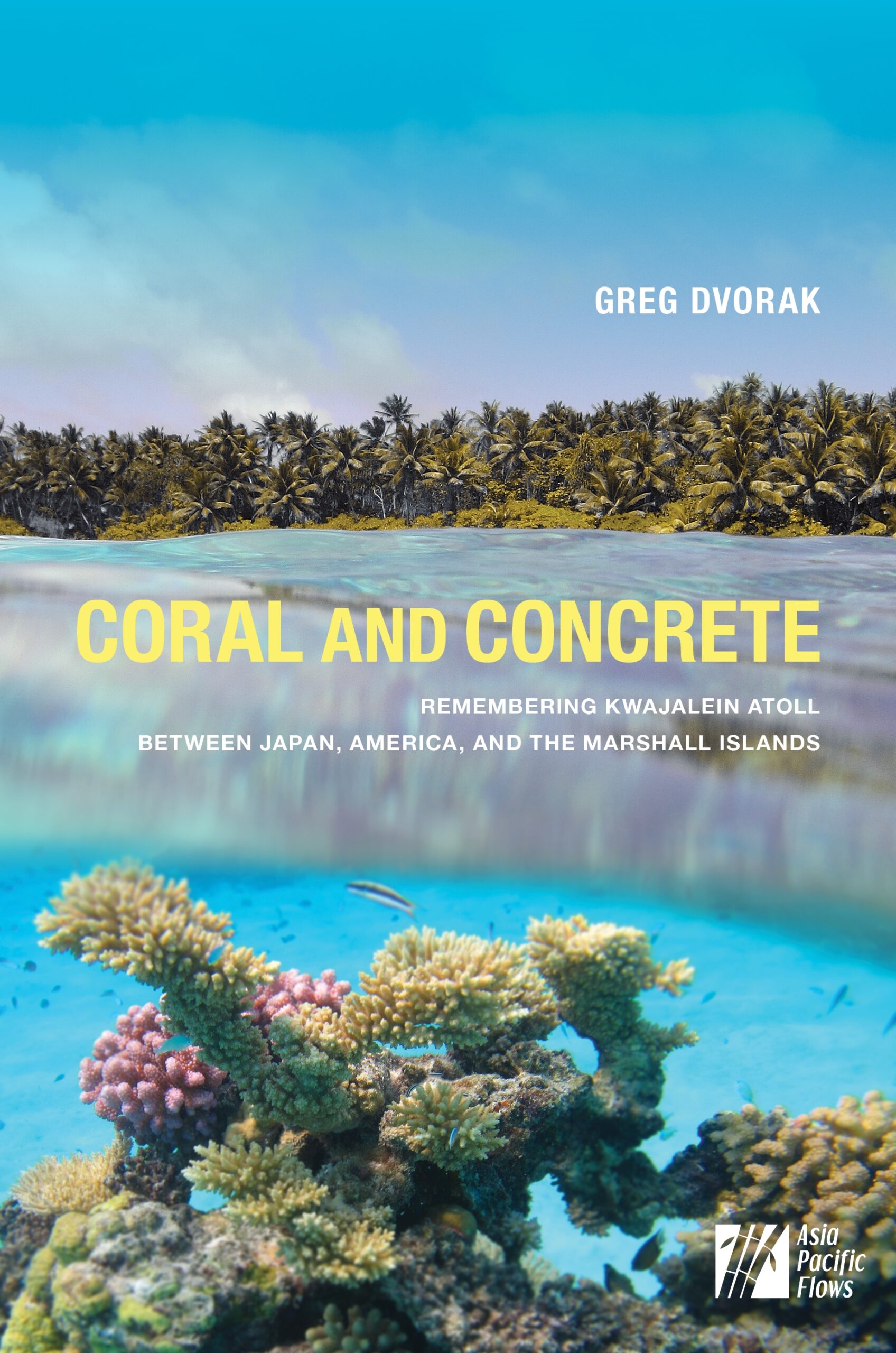Coral and Concrete: Remembering Kwajalein Atoll between Japan, America, and the Marshall Islands
- About the Book
-
Coral and Concrete, Greg Dvorak’s cross-cultural history of Kwajalein Atoll, Marshall Islands, explores intersections of environment, identity, empire, and memory in the largest inhabited coral atoll on earth. Approaching the multiple “atollscapes” of Kwajalein’s past and present as Marshallese ancestral land, Japanese colonial outpost, Pacific War battlefield, American weapons-testing base, and an enduring home for many, Dvorak delves into personal narratives and collective mythologies from contradictory vantage points. He navigates the tensions between “little stories” of ordinary human actors and “big stories” of global politics—drawing upon the “little” metaphor of the coral organisms that colonize and build atolls, and the “big” metaphor of the all-encompassing concrete that buries and co-opts the past.
Building upon the growing body of literature about militarism and decolonization in Oceania, this book advocates a layered, nuanced approach that emphasizes the multiplicity and contradictions of Pacific Islands histories as an antidote to American hegemony and globalization within and beyond the region. It also brings Japanese, Korean, Okinawan, and American perspectives into conversation with Micronesians’ recollections of colonialism and war. This transnational history—built upon a combination of reflective personal narrative, ethnography, cultural studies, and postcolonial studies—thus resituates Kwajalein Atoll as a pivotal site where Islanders have not only thrived for thousands of years, but also mediated between East and West, shaping crucial world events.
Based on multi-sited ethnographic and archival research, as well as Dvorak’s own experiences growing up between Kwajalein, the United States, and Japan, Coral and Concrete integrates narrative and imagery with semiotic analysis of photographs, maps, films, and music, traversing colonial tropical fantasies, tales of victory and defeat, missile testing, fisheries, war-bereavement rituals, and landowner resistance movements, from the twentieth century through the present day. Representing history as a perennial struggle between coral and concrete, the book offers an Oceanian paradigm for decolonization, resistance, solidarity, and optimism that should appeal to all readers far beyond the Marshall Islands.
- About the Author(s)
-
Greg Dvorak, Author
Greg Dvorak is professor at Waseda University in Tokyo, specializing in Pacific/Asian cultural studies and history.Patricio N. Abinales, Series Editor
Terence Wesley-Smith, Series Editor
Terence Wesley-Smith is a professor in the Center for Pacific Islands Studies, University of Hawai‘i at Mānoa.
- Reviews and Endorsements
-
- There is good argument for careful analyses of global “hotspots” as exemplar places that disclose larger political, economic, military, and popular culture connections and Kwajalein Atoll is certainly one of these places. Clearly and evocatively, Dvorak deploys key metaphors of “coral” and “concrete” to represent historical accretions on the atoll, and also to symbolize his interest in smaller personal, and larger global stories.
—Lamont Lindstrom, The University of Tulsa - Dvorak has a unique perspective on this global hot spot, both as a “Kwaj kid” who grew up on the atoll, calling it home, and as a cross-cultural historian equally comfortable with Marshallese, Japanese, and US viewpoints. Employing metaphors of coral and concrete as contesting accretions on the atoll, Dvorak explores tensions between “little stories” of people and “big stories” of global politics, demonstrating how the constantly invading concrete has buried the past.
—CHOICE, July 2019 (Vol. 56 No. 11) - Coral and Concrete is the first major scholarship to study a single atoll in the Marshall Islands over time and to consider the cumulative impacts of Japanese and American colonialism alongside consistent and active Marshallese resistance to the settlers who sidelined the Marshallese on their own land. . . . [The book] is beautifully researched and poetic in style as Dvorak unfolds the multiple layers of Kwajalein across time and space. Using coral as a “metaphor of deep time,” Dvorak creates a space for readers, like the coral, “to break the surface of the water and make islet after islet, connected by reef, to form atolls” of new understandings and possibilities.
—Holly M. Barker, University of Washington, Pacific Affairs, 93:1 (March 2020) - This is a remarkable book. . . . Coral is a metaphor for the layering of ancestral knowledge accumulated through time as the foundational, life-sustaining core of the atoll; it speaks to the migration, inter-connectedness, and multilayered histories linking the deeper past with the present. Concrete represents the layers of imperial, colonial, and capitalist forces that have pulverized and paved over the atoll's coral formations and the histories that made them. Here then is an apt, environmentally specific approach through which to study the complex interaction of natives and strangers.
—David Hanlon, The Journal of Pacific History, 54:3 (July 2019)
- There is good argument for careful analyses of global “hotspots” as exemplar places that disclose larger political, economic, military, and popular culture connections and Kwajalein Atoll is certainly one of these places. Clearly and evocatively, Dvorak deploys key metaphors of “coral” and “concrete” to represent historical accretions on the atoll, and also to symbolize his interest in smaller personal, and larger global stories.
- Supporting Resources
-





